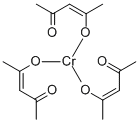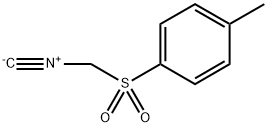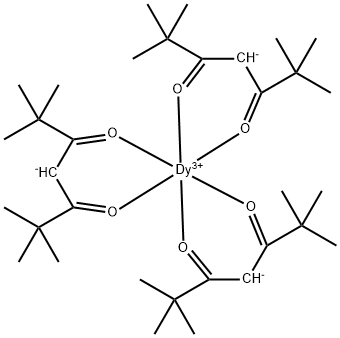EC 3.4.21.14
Synonym(s):Alcalase 2.4L;Esperase 8.0L;Everlase 16.0 L;Proteinase from Bacillus licheniformis;Savinase 16.0L
- CAS NO.:9014-01-1
- Empirical Formula: Unspecified
- Molecular Weight: 0
- MDL number: MFCD00165548
- EINECS: 232-752-2
- SAFETY DATA SHEET (SDS)
- Update Date: 2024-11-01 18:09:03
What is EC 3.4.21.14?
Chemical properties
These are proteolytic enzymes which take the form of light-colored, free-flowing powders. A protein containing numerous amino acids
The Uses of EC 3.4.21.14
This is a proteolytic enzyme isolated from the fermentation of Bacillus licheniformis. It is a serine endoproteinase with a broad specificity towards native and denatured proteins, and is active under alkaline conditions. It is for use in Total Dietary Fiber Assays (TDF-100A).
The Uses of EC 3.4.21.14
Protease from Bacillus licheniformis has been used to digest the neurolemma in the antennal lobe of the moth; Heliothis virescens.
The Uses of EC 3.4.21.14
Protease from Bacillus sp. has been used to determine its proteolytic activity by spectrophotometric method.
General Description
Proteolytic enzymes are known to possess catalytic, non-catalytic and ancillary domains. Proteases are broadly classified as endopeptidases and exopeptidases. Functionally they are divided as aspartic, glutamic, cysteine, threonine, serine and metalloproteases.
Biochem/physiol Actions
Protease catabolizes proteins by hydrolysis of peptide bonds. Proteases are inactivated by serine active-site inhibitors, such as phenylmethylsulfonyl fluoride (PMSF) and diisopropylfluorophosphate. Proteases, secreted from Bacillus sp., typically have molecular weights ranging from 20,000 to 30,000. They are typcially stabilized by Ca2+ and have high isoelectric points.
Safety Profile
Moderately toxic by ingestion. Aneye irritant. When heated to decomposition it emits toxicfumes of NOx.
Potential Exposure
These commercial proteolytic enzymes are used in laundry detergent formulations
Purification Methods
This alkaline protease is purified 211-fold by affinity chromatography using 4-(4-aminophenylazo)phenylarsonic acid complex to activated CH-Sepharose 4B. It is inhibited by 2-phenylethane boronic acid, PMSF, 3,4-dichloroisocoumarin, acetone and benzamide. [Chandraskaren & Dhar Anal Biochem 150 141 1985, Schomburg & Schomburg Springer Handbook of Enzymes 2nd Edn vol 7 p 286 2002.] Synexin (from bovine liver) M 47,000 Da. This Ca binding protein is purified by (NH4)2SO4 precipitation, then by a specific pH step elution from a chromatofocusing medium in the absence of ampholytes. The pI is 7.5. [Scott et al. Anal Biochem 149 163 1985.]
Incompatibilities
Incompatible with oxidizers (chlorates, nitrates, peroxides, permanganates, perchlorates, chlorine, bromine, fluorine, etc.); contact may cause fires or explosions. Keep away from alkaline materials, strong bases, strong acids, oxoacids, epoxides.
Properties of EC 3.4.21.14
| Density | 1.3 |
| vapor pressure | 0Pa at 25℃ |
| storage temp. | 2-8°C |
| form | powder |
| color | white |
| Water Solubility | 100g/L at 25℃ |
| Stability: | store cold |
| CAS DataBase Reference | 9014-01-1 |
| EPA Substance Registry System | Subtilisin (9014-01-1) |
Safety information for EC 3.4.21.14
| Signal word | Danger |
| Pictogram(s) |
 Corrosion Corrosives GHS05  Exclamation Mark Irritant GHS07  Health Hazard GHS08  Environment GHS09 |
| GHS Hazard Statements |
H302:Acute toxicity,oral H315:Skin corrosion/irritation H318:Serious eye damage/eye irritation H334:Sensitisation, respiratory H335:Specific target organ toxicity, single exposure;Respiratory tract irritation H410:Hazardous to the aquatic environment, long-term hazard |
| Precautionary Statement Codes |
P261:Avoid breathing dust/fume/gas/mist/vapours/spray. P273:Avoid release to the environment. P280:Wear protective gloves/protective clothing/eye protection/face protection. P301+P312:IF SWALLOWED: call a POISON CENTER or doctor/physician IF you feel unwell. P302+P352:IF ON SKIN: wash with plenty of soap and water. P305+P351+P338:IF IN EYES: Rinse cautiously with water for several minutes. Remove contact lenses, if present and easy to do. Continuerinsing. |
Computed Descriptors for EC 3.4.21.14
New Products
4-AMINO-TETRAHYDRO-PYRAN-4-CARBOXYLIC ACID HCL 4-(Dimethylamino)tetrahydro-2H-pyran-4-carbonitrile 4-Aminotetrahydropyran-4-carbonitrile Hydrochloride (R)-3-Aminobutanenitrile Hydrochloride 3-((Dimethylamino)methyl)-5-methylhexan-2-one oxalate 1,4-Dioxa-8-azaspiro[4.5]decane 5-Bromo-2-nitropyridine Nimesulide BP Aceclofenac IP/BP/EP Diclofenac Sodium IP/BP/EP/USP Mefenamic Acid IP/BP/EP/USP Ornidazole IP Diclofenac Potassium THOMAIND PAPER PH 2.0 TO 4.5 1 BOX BUFFER CAPSULE PH 9.2 - 10 CAP SODIUM CHLORIDE 0.1N CVS ALLOXAN MONOHYDRATE 98% PLATINUM 0.5% ON 3 MM ALUMINA PELLETS (TYPE 73) LITHIUM AAS SOLUTION 2-Bromo-1-(bromomethyl)-3-chloro-5-nitrobenzene 2-Bromo-3-nitroaniline N-(3-Hydroxypropyl)-N-methylacetamide 3-Bromo-6-chloropyridazine 4-ethyl-3-nitrobenzoic acidRelated products of tetrahydrofuran








You may like
-
 Protease from Bacillus sp. CASView Details
Protease from Bacillus sp. CASView Details -
 Protease from Bacillus sp. CASView Details
Protease from Bacillus sp. CASView Details -
 Protease from Bacillus licheniformis CAS 9014-01-1View Details
Protease from Bacillus licheniformis CAS 9014-01-1View Details
9014-01-1 -
 Protease from Bacillus licheniformis CAS 9014-01-1View Details
Protease from Bacillus licheniformis CAS 9014-01-1View Details
9014-01-1 -
 Protease from Bacillus licheniformis CAS 9014-01-1View Details
Protease from Bacillus licheniformis CAS 9014-01-1View Details
9014-01-1 -
 Protease from Bacillus sp. CASView Details
Protease from Bacillus sp. CASView Details -
 Proteinase, bacterial CAS 9014-01-1View Details
Proteinase, bacterial CAS 9014-01-1View Details
9014-01-1 -
 Protease from Bacillus licheniformis CAS 9014-01-1View Details
Protease from Bacillus licheniformis CAS 9014-01-1View Details
9014-01-1